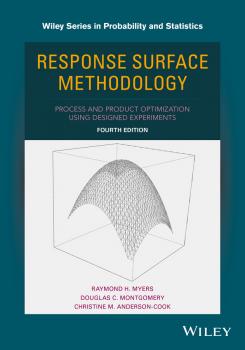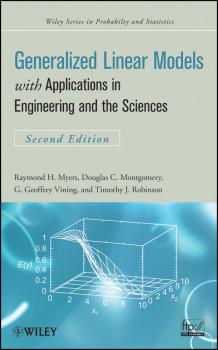ТОП просматриваемых книг сайта:
Raymond Myers H.
Список книг автора Raymond Myers H.Response Surface Methodology. Process and Product Optimization Using Designed Experiments - Raymond Myers H.
Аннотация
Praise for the Third Edition: “This new third edition has been substantially rewritten and updated with new topics and material, new examples and exercises, and to more fully illustrate modern applications of RSM.” – Zentralblatt Math Featuring a substantial revision, the Fourth Edition of Response Surface Methodology: Process and Product Optimization Using Designed Experiments presents updated coverage on the underlying theory and applications of response surface methodology (RSM). Providing the assumptions and conditions necessary to successfully apply RSM in modern applications, the new edition covers classical and modern response surface designs in order to present a clear connection between the designs and analyses in RSM. With multiple revised sections with new topics and expanded coverage, Response Surface Methodology: Process and Product Optimization Using Designed Experiments, Fourth Edition includes: Many updates on topics such as optimal designs, optimization techniques, robust parameter design, methods for design evaluation, computer-generated designs, multiple response optimization, and non-normal responses Additional coverage on topics such as experiments with computer models, definitive screening designs, and data measured with error Expanded integration of examples and experiments, which present up-to-date software applications, such as JMP®, SAS, and Design-Expert®, throughout An extensive references section to help readers stay up-to-date with leading research in the field of RSM An ideal textbook for upper-undergraduate and graduate-level courses in statistics, engineering, and chemical/physical sciences, Response Surface Methodology: Process and Product Optimization Using Designed Experiments, Fourth Edition is also a useful reference for applied statisticians and engineers in disciplines such as quality, process, and chemistry.
Аннотация
Praise for the First Edition «The obvious enthusiasm of Myers, Montgomery, and Vining and their reliance on their many examples as a major focus of their pedagogy make Generalized Linear Models a joy to read. Every statistician working in any area of applied science should buy it and experience the excitement of these new approaches to familiar activities.» —Technometrics Generalized Linear Models: With Applications in Engineering and the Sciences, Second Edition continues to provide a clear introduction to the theoretical foundations and key applications of generalized linear models (GLMs). Maintaining the same nontechnical approach as its predecessor, this update has been thoroughly extended to include the latest developments, relevant computational approaches, and modern examples from the fields of engineering and physical sciences. This new edition maintains its accessible approach to the topic by reviewing the various types of problems that support the use of GLMs and providing an overview of the basic, related concepts such as multiple linear regression, nonlinear regression, least squares, and the maximum likelihood estimation procedure. Incorporating the latest developments, new features of this Second Edition include: A new chapter on random effects and designs for GLMs A thoroughly revised chapter on logistic and Poisson regression, now with additional results on goodness of fit testing, nominal and ordinal responses, and overdispersion A new emphasis on GLM design, with added sections on designs for regression models and optimal designs for nonlinear regression models Expanded discussion of weighted least squares, including examples that illustrate how to estimate the weights Illustrations of R code to perform GLM analysis The authors demonstrate the diverse applications of GLMs through numerous examples, from classical applications in the fields of biology and biopharmaceuticals to more modern examples related to engineering and quality assurance. The Second Edition has been designed to demonstrate the growing computational nature of GLMs, as SAS®, Minitab®, JMP®, and R software packages are used throughout the book to demonstrate fitting and analysis of generalized linear models, perform inference, and conduct diagnostic checking. Numerous figures and screen shots illustrating computer output are provided, and a related FTP site houses supplementary material, including computer commands and additional data sets. Generalized Linear Models, Second Edition is an excellent book for courses on regression analysis and regression modeling at the upper-undergraduate and graduate level. It also serves as a valuable reference for engineers, scientists, and statisticians who must understand and apply GLMs in their work.


